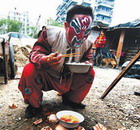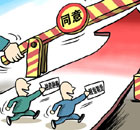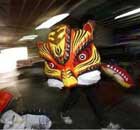Economy
Analysis: Restructuring to make economy a "tiger"
(Xinhua)
Updated: 2010-02-16 09:21
 |
Large Medium Small |
BEIJING: As China celebrates the arrival of the new lunar year, the Year of the Tiger, the world hopes China's economy will roar again in 2010, after it helped pull the global economy out of recession in 2009, the Year of the Ox.
The world's third largest economy will become a "real tiger" when the Chinese government successfully restructures the nation's economy, a task the authorities have made a priority, as evidenced by a string of recent comments by top leaders, analysts say.
In early January, President Hu Jintao called on the whole nation to strive to accelerate the adjustment of China's economic development pattern, to promote sound and fast economic and social development.
The transformation of the economic development mode, based on a comprehensive judgement on the international and domestic economic situation, should not be delayed, Hu said at a seminar of provincial and ministerial-level officials.
The key for the transformation is to achieve it "at an accelerated speed" and with practical results, he added.
Vice Premier Li Keqiang said China has entered a critical period when adjusting the nation's economic structure is the only approach to advance the country's sustainable development.
Asia Development Bank economist Zhuang Jian said the repeated call for accelerated reform reflects policymakers' determination to put it at the top of the government agenda.
Boosted by a raft of stimulus measures, China's economy expanded 8.7 percent in 2009, staging a speedy recovery after being hit by the worst global financial crisis in eight decades.
Even though Chinese exports dropped 16 percent last year, China still overtook Germany to become the world's largest exporter.
The January trade data provided solid evidence of growth consolidation, with exports jumping 21 percent year-on-year and imports surging 85.5 percent.
After having sustained the nation's fast economic growth for more than two decades, the weaknesses of China's export-led growth model were revealed with the onset of the global economic recession which originated in the U.S.
Analysts say China cannot rely on exports for growth as much as it used to anymore. The path for future growth is clear, with the nation's top leaders repeated pledges to transform the economic growth model.
"The past ten, twenty and thirty years have seen China accumulate economic strength in a quantitative way," said Wang Xiaoguang, a researcher with the Chinese Academy of Governance.
But in the future it should focus more on quality, he added.
Li Keqiang said that expanding domestic demand is the prime and long-term strategy for economic development.
To offset weak external demand, the government looked to domestic demand to shore up growth in 2009, with the government announcing a raft of policy incentives to spur consumption.
Tax cuts and auto subsidies helped propel China to becoming the world's biggest auto market last year.
Wang Xiaoguang said China still has plenty of potential to grow its consumption, with the nation's vast rural areas to provide plenty of demand.
In 2009, retail sales in rural areas grew 0.2 percentage points faster than those is urban regions.
In addition to subsidies for auto and home appliance purchases, the government said in the 2009 No. 1 document, which focused on rural development, enunciated policies to help farmers buy building materials.
Demand for building material is growing as the better-off rural residents renovate their houses to live more comfortable lives.
Although details of the new incentives have yet to be released, it will massively stimulate rural demand, Chang Xiaocun, a Ministry of Commerce official, said.
National Statistics Bureau data showed consumption contributed 4.6 percent to GDP growth in 2009, compared with 8 percent for investment and a negative 3.9 percent from exports.
"Growth will not be a problem this year as the economy has bounced back from a the big slowdown," said Wang Xiaoguang.
The blind pursuit of economic rate is not desirable for the Chinese economy, he said, adding that a growth rate between 8 percent and 9 percent is appropriate during the economic restructuring.







